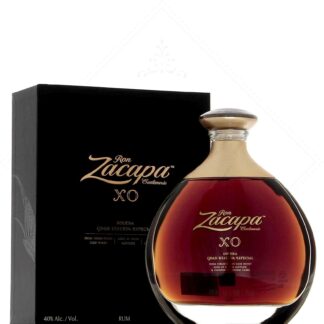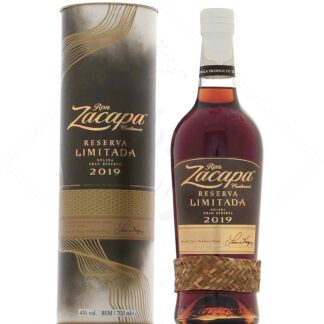Zacapa

Zacapa is a Guatemalan rum brand created in 1976. This date is not insignificant, as it marks the centenary of the town of the same name. It was on this occasion that Industrias Licoreras de Guatemala (who also own the Botran brand) launched the Zacapa brand, entrusting its development to chemist Alejandro Burgaleta. The distillery, Ingenio Tulula, has been in existence since 1940.
Zacapa rums are made not from molasses or pure juice, but from cane honey. This expression, which belongs to the world of Latin "rones", "mel de caña", refers to evaporated cane juice. Once boiled, fresh cane juice is transformed into syrup, with a concentration of 70% sugar. The main advantage of this "light molasses" is its shelf life. It can therefore be distilled all year round.
The syrup is then diluted with water to start the fermentation process. This spring water comes from wells belonging to the distillery. It is this same pure water that is later used to reduce the alcohol content of the rums.
Zacapa rum production
This honey is made from 3 varieties of cane, grown all around the distillery. The plains of the Santiaguito volcano provide an abundant harvest of cane. Fermentation takes a long time (5 days on average). Yeasts extracted from pineapple are used to produce musts with an alcohol content of between 7.5 and 7.5%. In addition to alcohol, this fermentation also produces large quantities of CO2, which is reused in various industries around the country.
The "cane wine", averaging 8%, is then distilled in a stainless steel double column (with copper trays and condenser), to produce rums with an alcohol content of 88% to 92%. There is no Zacapa white rum, as all production is casked after reduction to 60% alcohol.
Maestra ronera Lorena Vasquez is undoubtedly the most important person at Zacapa rums. She is the cellar master, overseeing aging and blending.
But first, let's set the scene: the distillery (also known as Licorera Zacapaneca) is located at an altitude of 275 metres. But the barrels of Zacapa rum are stored much further away, almost 400 km from the distillery, in a winery nicknamed the "House over the Clouds", in Quetzaltenango. This location has the advantage of being perched at 2,300 meters, on the Guatemalan altiplano. The climate is therefore much milder than on the plains, allowing for much gentler aging. For example, the angels' share (the annual evaporation of rum) is around 6%, compared with 8-10% on the plains. Similarly, the altitude and lack of oxygen mean that oxidation of rum in casks is better controlled.
Complex aging
The cellar master has a considerable number of barrels at her disposal: around 180,000! With this raw material, she carries out a highly complex aging process. It's a sort of hybrid between static ageing, maturing and solera.
The first part of the ageing process takes place in ex-bourbon casks (first fill and re-fill). After this initial 3-year maturation, a little rum is added from an old reserve, contained in large, worn-out American oak tuns. This is in fact an exchange, as some young rum is also placed in this old reserve.
The rums are then transferred to old oloroso sherry casks, before receiving a small amount of reserve rum. For the final stage, the rum is placed in Pedro Ximenez sherry casks, then integrated into a solera system.
Cold filtration is carried out before bottling. The bottles are decorated with the famous wickerwork belt, handcrafted to highlight the multi-millennial heritage of the Maya people.
Zacapa rums also benefit from the Rones de Guatemala DOP (Denominacion de Origen Protegida), the equivalent of an IGP for French rums.
The range is quite extensive, but is based above all on Zacapa 23 and Zacapa XO. The former bears the number 23, as the oldest rums in the blend, or rather in the solera, are 23 years old. The XO is distinguished by its additional barrel ageing, in barrels that have contained cognac. There are also Reserva Limitada, collector's vintages in limited editions. Read less















